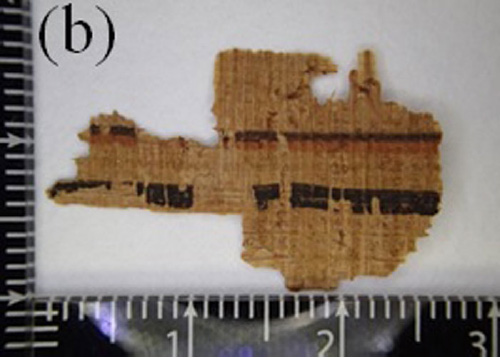Papyrus Project
“Tokai University Ancient Egyptian Papyrus Restoration, Conservation, Decipherment, and Publication Project” has started from 2013. There are 6 sub-projects running under one broad theme.
1) Student papyrus conservator project (Yamahana Lab.)
2) Digital Archive project (Miyahara Lab. and Yamahana Lab.)
3) Scientific Analysis project of ancient artifacts (Kuzumaki Lab. and Yamahana Lab.)
4) Artifacts Restoration project (Tokai University Challenge Center, Egyptian Project and Yamahana Lab.)
5) International Project of Papyrus Decipherment (Professor J.G. Manning, Yale University, Professor Richard Jasnow, Johns
Hopkins University, and Myriam Krutzsch, Neues Museum, Berlin, and Kyoko Yamahana)
6) “Eternal Nile” Exhibition Project (Yokohama Museum of EurAsian Cultures and Yamahana Lab.)
Nos. 5) and 6) have already ended with great success. Nos. 1)~4) are still vigorously under operation by student volunteers (Egyptian Project) and faculty members.
Join us to be a proud member of our team!!
We will introduce you some overviews of our activities.
Topic 1:
Was Papyrus used like a ‘LINE’?
What is Papyrus?
The word ‘paper’ derives from ‘papyrus’, the ancient medium used for recording letters and drawings. It was in use for a long time until parchment took over the role of papyrus. Papyrus ‘paper’ was made from marsh plant Cyperus papyrus.L. Ancient Egyptians cut the stem of the plant, stripped the stem into thin slices, spread them vertically to make a bottom layer, and spread them horizontally on top to create a two-layer sheet. The sheet was then pressed and dried.
Ancient Egyptians wrote Hieroglyph, Hieratic, Demotic, Greek and other relevant languages on papyrus with reed or rush pen. The majority of documents, especially in our AENET collection was accounts, contracts, religious writings and letters. Since papyrus paper was an expensive commodity, one was expected to return a letter to a sender by writing a reply on the same sheet of papyrus. Doesn’t it sound like a modern SNS ‘LINE’? that you cannot just ignore a message after reading it?
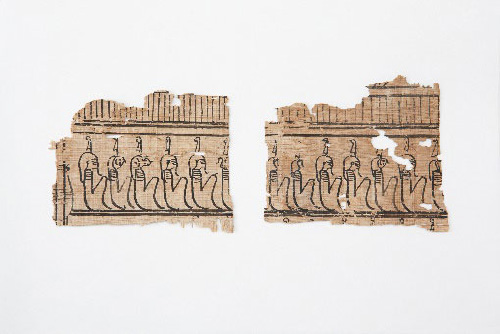
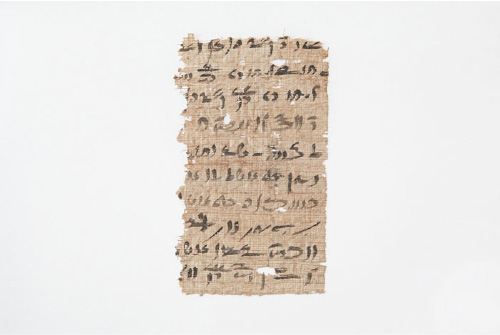
The most numerous collection in Japan!
There are over 400 papyrus fragments in our AENET collection. Our team -Yale, Johns Hopkins and Tokai university team- recognized them as valuable testaments of ancient history, and someone should clean and restore the papyri before deciphering. However, there is no professional papyrus conservator in Japan.
Tokai University International Project for Papyrus Restoration, Conservation, Decipherment, and Publication
So we have started the ‘Papyrus Project’ since 2013, and start training undergraduate students to be papyrus conservators.
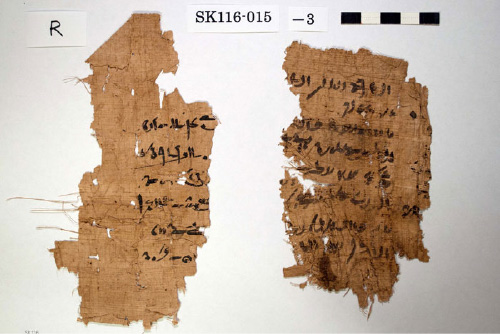
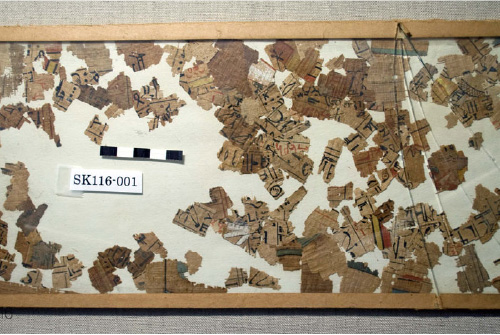
First Papyrus Restoration Workshop in Japan!
The project started in 2013. The first attempt was to invite a professional conservator from abroad to train our Tokai students. Many students wanted to participate, but only 12 were chosen to learn from Ms. Myriam Krutzsch, a papyrus conservator who lives in Berlin. She is the ‘Maister’ of all papyrus conservators in the world and therefore having her as an instructor was one of the most blessings for us.
Since it was our very first experience to restore the papyri, we started from the beginning, buying all equipment from abroad and taking useful advice from Japanese paper conservators.
Ms. Myriam kindly taught students the essential frame of mind to be a conservator, that they should always be aware of handling fragile, yet extremely important history; what should be done and should not be done before and during restoration process. She also taught a class on ‘papyrology’ from her research on papyrus ‘paper’ texture and structure.
The workshop was held in English. Thus Prof. Yamahana and other student volunteers helped interpretation during the first year of 2013, but as the project went by, the students got used to listening and speaking in English.
In the next year of 2014, some students went to the University of Michigan Papyrology collection and had further training by Ms. Leyla Lau-Lamb, a senior conservator. They then went to Beriln by their own, to gain further technical knowledge under the guidance of Ms. Myriam Krutzsch.
Those students who studied papyrus restoration and conservation achieved not only the technical knowledge, but also learned what it takes to be a professional. They were so much moved when their restored pieces of papyri were displayed in a special exhibition in Berlin.
They gained confidence that a success would come after overcoming many hardships.
If you are interested in ancient papyrus, and curious about restoring by yourself, you can be the next papyrus conservator!
It is only our Tokai university where gives you papyrus restoration lessons.
Why don’t you join us and be a part of the precious experience of restoring the heritage of mankind!!
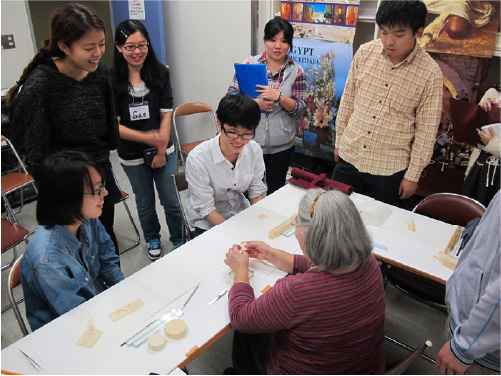

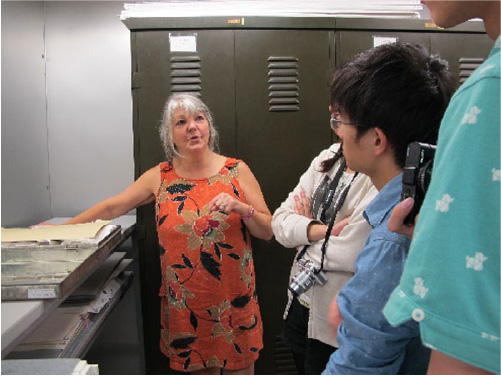
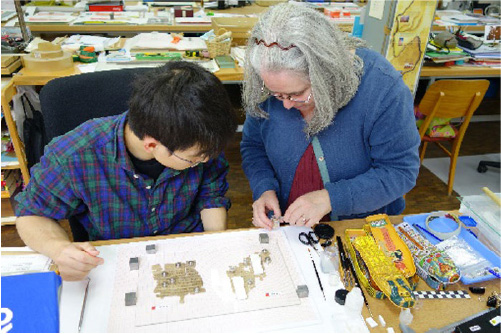
Topic 2:
Decoding the ancient Language!
Deciphering and Publishing
It is only after restoration you can finally decode the ancient language written on papyrus. The team consists of Professor Joseph Manning of Yale University, Professor Richard Jasnow of Johns Hopkins University, their doctoral students, and Prof. Kyoko Yamahana worked for more than three years to decipher AENET papyri.
In Japan, unfortunately, the academic field of ‘papyrology’ is somewhat hidden behind the popularity of Egyptian archaeology. The courses of ancient languages such as Hieratic or Demotic are rarely offered in Japanese universities. Even Hierogrlyph, a major language for ancient Egyptian study, is seldom taught in Japan. Tokai University has a course of elementary Hierogrlyph that gives an opportunity for students who wants to learn ancient Egypt.
In the Tokai University papyri collection, almost all documents were written in Demotic. Knowing the scarcity of scholars in Japan, Prof. Yamahana sought for help to Prof. Manning and Prof. Jasnow, who specialized in Demotic and Greek. They evaluated some of the papyri were worth publishing so that the scholars all over the world could refer the texts to utilize for their researches.
So the project began. Prof. Manning and Prof. Jasnow, and their doctoral students were invited to Tokai University, examined the papyri, and trying to match small fragments, and worked very hard to decipher the documents. They also offered lectures on Hieroglyph, Hieratic, and Demotic to Tokai students, and participated in a discussion session among Japanese scholars.
During their stay, they contributed greatly to cultivate our intellectual knowledge. Tokai students were of course involved in helping them. The students who had never gone to abroad to experience international academic meeting could feel the atmosphere of international academia by working side by side with the foreign scholars.
Our effort will be published in the spring of 2016, as The Demotic and Hieratic Papyri in the Suzuki Collection of Tokai University, Japan, from Lockwood press in the US.
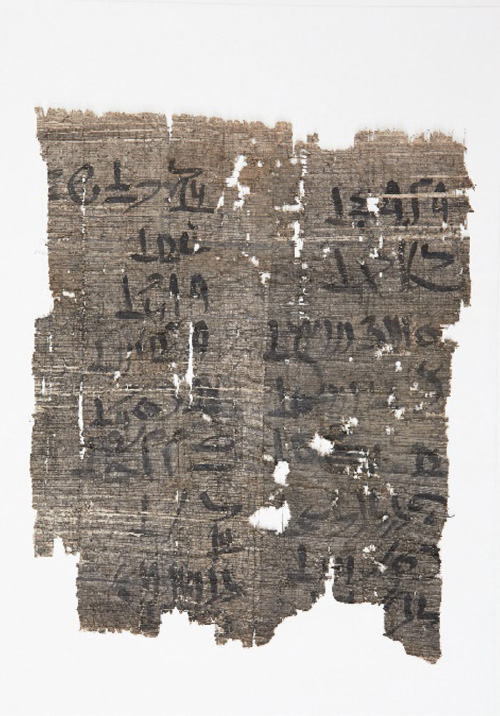
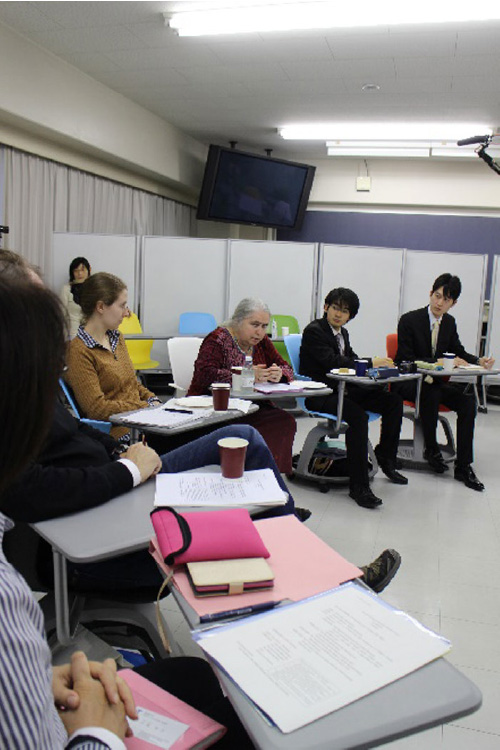
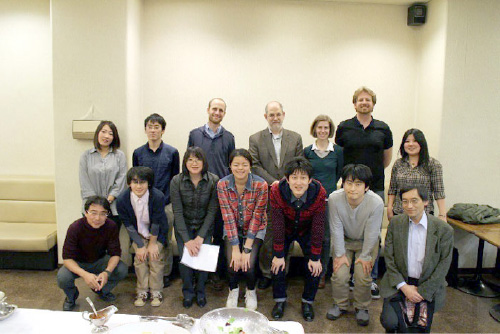
Topic 3:
Resurrecting the Past
Digital Archive Project
When the AENET collection was donated to Tokai, most negatives and slides were already more than 50 years old and they were in bad state of preservation. Many were reddened, scratched, and affected by fungi.
In the Digital Archive Project, we first cleansed the negatives and slides with pure water, then dried, and scanned digitally with the quality of 4800dpi (2 to 3 GB per data). The project was undertaken with a helpful cooperation and advice of Tokai University Research & Information Center (TRIC).
The original images were first stored, then we made retouches to erase traces of fungi, adjusted colors, and recovered sharpness of the original photos when they were taken.
Many images reflect how Egypt looked like 50 to 60 years ago, before the urbanization with many high-rise buildings. The restored images now display vivid life of the local people, cotton harvest, and other lively scenes in the market.
What is most important in this photography collection is that they contain Nubian fortresses and sites now sank under the Lake Nasser.
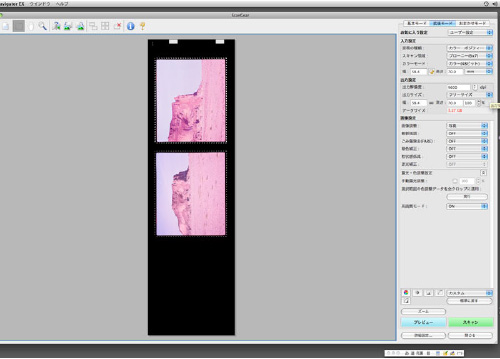
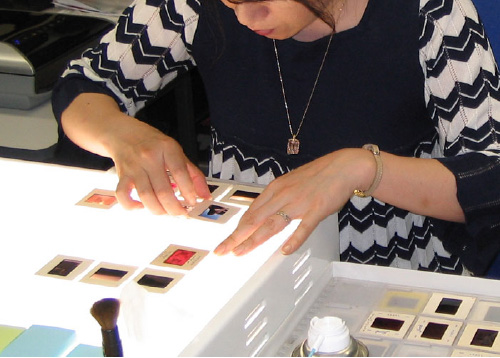

Topic 4:
Revealing the ancient craftsmanship with high technology
Through the interdisciplinary research of science and archaeology
Tokai University has many divisions and departments, and we are taking advantage of our scale-merit to conduct interdisciplinary research.
Scientific analysis of ancient Egyptian papyri
We are now undertaking scientific analysis of papyrus documents through interdisciplinary cooperation with the department of materials science in Division of Engineering.
Ancient Egyptian Dynasty began somewhere around BC3000 and lasted until 30 BC. When Japanese culture was still in Jomon period, the ancient Egyptians were already building massive stone structure such as pyramids, crafting golden masks, and writing letters with sophisticated grammatical system.
The AENET collection is now collaborating with researchers that specialize in organic and inorganic materials, and trying to reveal not only the materials themselves, but also the mode of ancient trade network and craftsmanship.
Let us now introduce a research of papyrus documents with Professor Kuzumaki’s lab at the materials science department.
The AENET collection papyri are mostly written in Demotic, however, there are some documents written in Hieratic and Greek. We can see the relative chronology in a broad sense that Hieratic is older than Greek, however, such relativeness is still too rough. Can we develop a useful scale to date the papyri scientifically?
Also, we know that there are many varieties in papyrus texture and softness. What is the difference mean?
We are hoping to grasp a chance to know these questions which are still not answered by using scientific analysis.
So far, we have examined a blank papyrus, black and red ink, and other pigments used for papyri in our collection. Concerning that these archaeological pieces were valuable cultural heritage, we adopted non-destructive analysis.
For the papyrus texture, we used FT-IR (Fourier Transform Infrared Spectroscopy), and examined deterioration of cellulose. The rate of deterioration differed among the samples, thus giving a clue to indicate a relative chronology.
Some samples of black ink were tested by XRF (X-ray Florescence) and XRD (X-ray Diffraction). The result shows that there are two types of sources for black, one is soot and another is iron compound.
We also examined white, red, blue, and yellow pigments used for papyrus cartonnage. It turned out that the ancient Egyptians were not only utilizing the material obtainable from the Nile Valley, but also importing rare minerals from outside.

